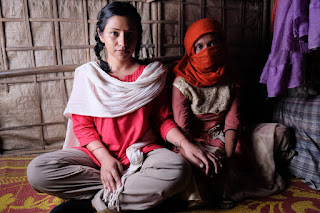mf578016@ohio.edu
From phones to computers to televisions, consumers are constantly bombarded with advertisements everywhere they look. However, behind the flashy images and catchy jungles, the products and services aren't always what they seem to be.
Consumers cannot avoid advertising and most advertisers do whatever it takes to grab a consumer's attention anyway. According to Daniella Alscher, a content marketing associate for G2, false advertising is "a false, misleading, or deceptive statement about a product or service being sold in an advertisement."
An example of a bait and switch advertisement(Source: Google Images).
Advertisers are often caught for making scientific claims about products lasting longer or giving results that aren't true. For example, Activia yogurt said it had "special bacterial ingredients." The yogurt was said to contain ingredients that were proven to help digestions. Although these claims were made and the price was increased by 30% compared to their other types of yogurt, the claims were found to be unproven.
Similarly, Kellogg's Rice Krispies cereal was said to book your immune system. The Federal Trade Commission (FTC) ordered Kellogg to stop advertising the product as immunity improving because the claim was "dubious." Kellogg agreed to pay $2.5 million to consumers affected by this advertisement and donated $2.5 million in Kellogg products to charity.
Advertisers use a variety of techniques to take advantage of consumers. Most of the time, advertisements operate on conscious and subconscious tracks of the brain. A majority of our daily tasks take part in the subconscious so when advertisers target this area of the brain, consumers are less likely to notice they are being marketed to.
Some techniques advertisers use to deceive consumers include bait and switch, lying by omission, puffery, quality/origin deception, and hidden fees. Bait and switch is where companies lure consumers into their store by advertising a product they don't intend to sell and then try to sell them a completely different product instead. Lying by omission is one of the most common forms of deceptive advertising. Advertisers remove relevant information so that the more appealing and interesting information remains.
Additionally, quality/origin deception is where a company doesn't disclose harmful information about a product or lying about the quality of something such as being 100% organic when it's not. Puffery includes making statements that are too vague to prove or disprove their correctness. Finally, hidden fees make a product look more enticing because the full price is not disclosed. The FTC states that the full terms and conditions must be clear.
In order to avoid deceptive advertising, make sure you are researching a product efficiently before purchasing. Make sure that you are looking at reliable and trusted sources. If you are doubting the reviews, check out the FTC's website for more information about what to look for in an ad as well as general reports.
In addition, consumers can file complaints to the FTC if they feel they have been deceived by an advertised product or service. They should then contact the Better Business Bureau after contacting the company first. According to Mary Engle, head of the Federal Trade Commission's Advertising Practices Division, if they company is not a fraud, they will try to correct the situation before you take further legal action.








